
Rootjunky APK To Bypass Google FRP Lock For Vivo Y100

Rootjunky APK To Bypass Google FRP Lock For Vivo Y100
Factory Reset Protection (FRP) is a security feature built into Android devices running Android 5.1 Lollipop and later versions. It prevents someone from using your phone after a factory data reset without Google account login credentials. The FRP makes it much less attractive for thieves to steal Android phones, knowing they will need help to access them.
FRP automatically activates when you add a Google account to your Android phone. It links the Vivo Y100 device to your account, making it the “trusted owner.” Once activated, FRP becomes embedded in the phone’s system.
While Google FRP is a valuable security feature, it’s vital to acknowledge that there are legitimate situations where bypassing it might be necessary. These instances include forgotten Google account credentials, buying a second-hand device, and device issues. In these cases, tools like RootJunky can help you bypass FRP Lock. We’ll explore how to use RootJunky APK later, but first, let’s define what it is and its role in FRP bypass.

The RootJunky APK is a free Android application also called RootJunky SDL or RootJunky FRP Bypass tool. This app’s primary function is to bypass the Google Account FRP lock on Samsung devices. Rootjunky uses the weaknesses in Android’s setup process to create a new user account or switch existing ones, letting you bypass the FRP and regain control of your phone.
You can complete this process using the app by connecting your phone to a computer through an OTG cable. RootJunky can be helpfu l if you’ve forgotten your Google account password or bought a second-hand phone locked to someone else’s account. However, only use it if you have legitimate reasons to bypass FRP lock, like accessing your device after forgetting your Google account details.

Downloading the RootJunky FRP bypass tool from unofficial sources can introduce malware risks, so stick to trusted sources like the official website. Additionally, when exploring RootJunky, it is vital to keep the following in mind:
- Not all Android devices are susceptible to the methods used by RootJunky. It is necessary to check compatibility with your specific device model and Android version.
- Using FRP bypass tools like RootJunkycan potentially compromise the security of your device. Be cautious and proceed if you fully understand the risks involved.
- Bypassing FRP may involve data loss.
- Download RootJunky FRP bypass APK from a reliable source to minimize the risk of malware or viruses. You can check the APK file from official websites or trusted forums.
- Google constantly updates its security measures, so these tools may not always work effectively.
Part 2: How To Use RootJunky To Bypass Google FRP?
Here are the general steps to use the FRP Bypass APK RootJunky app to bypass Google FRP lock. But remember that specific steps may vary depending on your device and Android version:
- Step 1: On your computer, download the Rootjunky RealTerm program from the official Rootjunky website.

- Step 2: On your phone, download the Rootjunky APK (com.rootjunky.frpbypass-1.0.apk) file from the official website or other reputable sites.

- Step 3: Go to Settings > Security and tap Install unknown apps. Then, enable unknown sources to allow installation of apps from outside the Play Store. Connect your device to a Wi-Fi network.

- Step 4: On your Android phone, open a file explorer app and install the downloaded RootJunky APK file.
- Step 5: Connect your smartphone to your computer using a USB cable.
- Step 6: Launch the Rootjunky RealTerm program on your computer. Under the Display tab, check the Half Duplex option.
- Step 7: On your computer, go to Device Manager > Modems. Locate your device’s port name (e.g., COM3).
- Step 8: On the RealTerm program, enter the correct port number under the Ports tab, then click Change.

Step 9: Click Send to establish a connection. Enter the two commands:
at + creg? \ r \ n
atd1234; \ r \ n
Step 10: Once connected, the Rootjunky APK on your phone will provide on-screen instructions to bypass FRP.
Step 11: If prompted, perform a factory data reset of your device.
While RootJunky offers a free method for FRP bypass, it can be incompatible with your device’s brand, requiring technical knowledge, tedious, and potentially risky. If you are looking for a simpler, safer, and more user-friendly solution, Wondershare Dr.Fone might be a better fit for you. If you want to learn how to use this tool to bypass FRP lock with minimal technical expertise, then keep reading.
Part 3: Easier Tool Than RootJunky APK To Bypass Google FRP
Google FRP adds an extra layer of security after a device reset. However, regaining access to the smartphone can be challenging if you forget your Google account details, forget your lock screen, or just buy a used device. While methods like the FRP RootJunky app exist, using it can be complex or risky.
Consider exploring third-party options like Dr.Fone for a potentially easier and safer FRP bypass solution. Dr.Fone Screen Unlock tool helps remove the Android FRP lock without requiring a PIN or Google Account.
Why Use Dr.Fone - Screen Unlock?
Here are some of the key features of Dr.Fone - Screen Unlock:
- **User-friendly:**Fone boasts an intuitive interface, eliminating the need for technical expertise. Even beginners can navigate the process with ease.
- **Widespread Brand Compatibility:**Fone supports mainstream brands, such as Samsung, Xiaomi, Oppo, Redmi, Realme, and Vivo, catering to a broader user base.
- **Fast and Efficient:**Regain access to your device in minutes without wasting time on tedious procedures.
Step-by-step Guide to Removing FRP Lock With Dr.Fone - Screen Unlock
Ready to leave the hassle of using RootJunky and easily bypass the FRP lock? Download and install Dr.Fone on your computer, then follow these steps to learn how to bypass Google FRP on your device:
- Step 1: Launch Dr.Fone on your computer and connect it to your Android device. Choose Screen Unlock from the Toolbox in the main interface.

- Step 2: Choose Android as your device type. This will take you to the next screen, where you can select Remove Google FRP Lock to proceed.

- Step 3: Select your device’s brand from the list and click Start to continue.
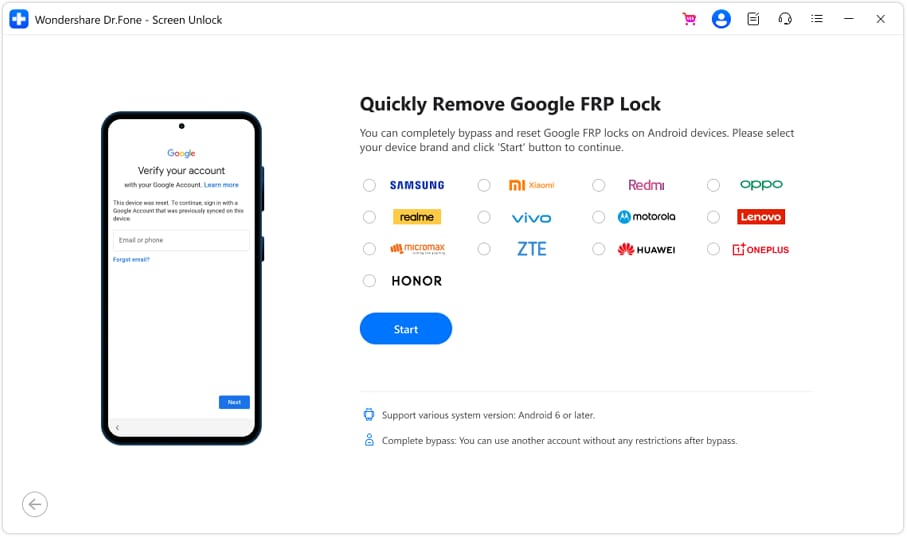
Note:
The next steps may vary depending on the brand you selected.
- Step 4: Select the OS version of your device and click Start to continue.
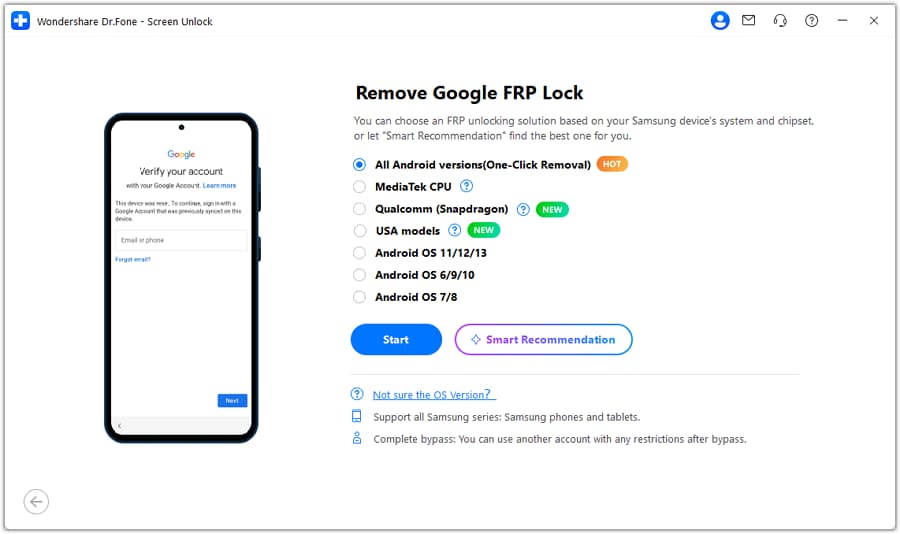
- Step 5: Access the secret menu on your phone using the on-screen instructions, then click Next to proceed to the next step.
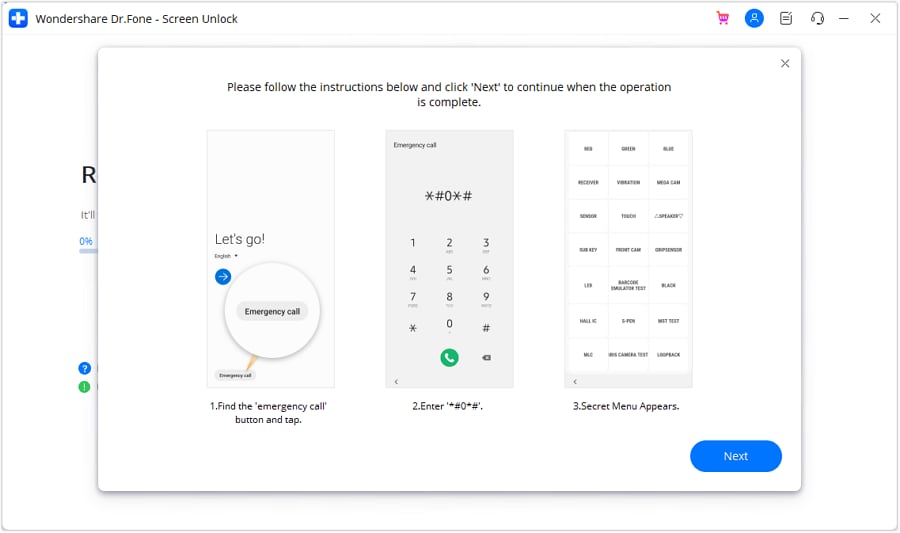
- Step 6: When your Samsung prompts you to activate USB debugging, tap Allow. Then, on your computer screen, click Authorized to confirm.

- Step 7: You will see the FRP lock being bypassed on your Android device on the next screen.
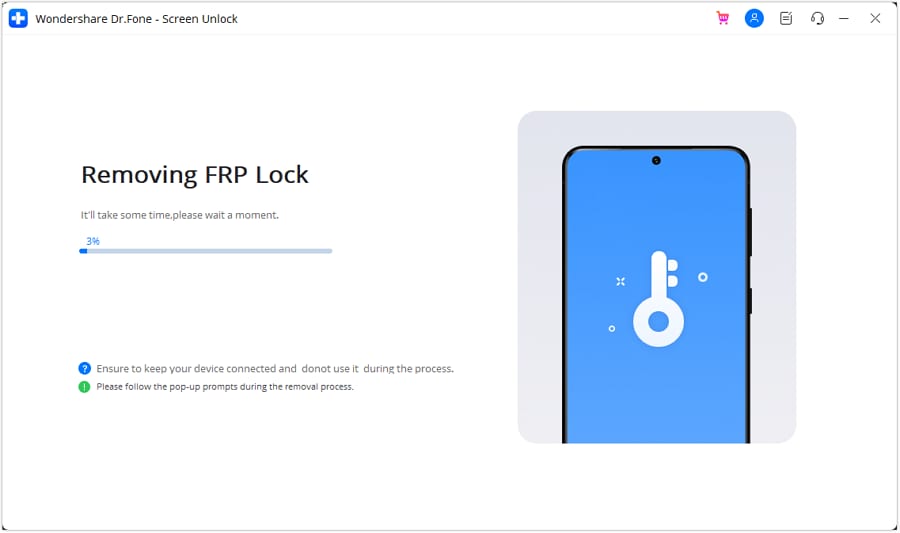
- Step 8: Click Done if the FRP lock removal was successful, otherwise, click Try Again to repeat the process.
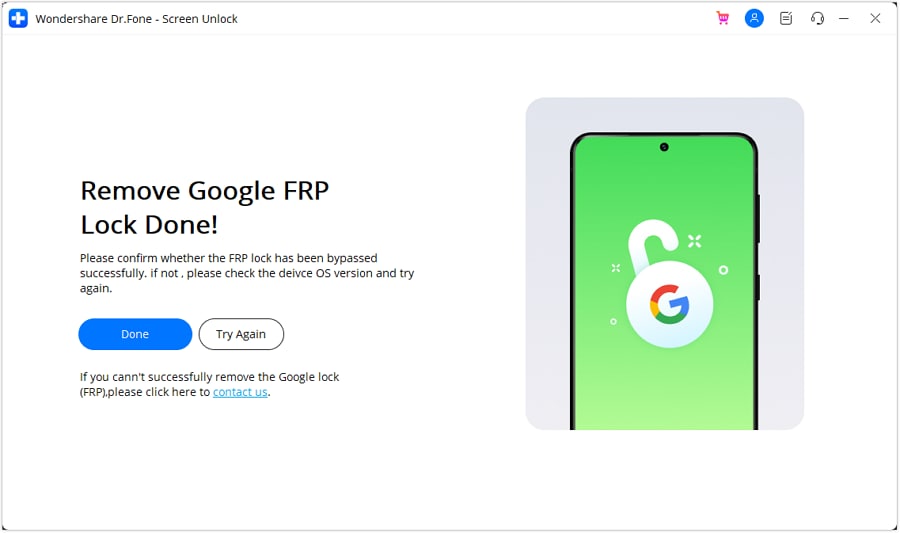
That’s it! With Dr.Fone Screen Unlock, you can easily bypass Google FRP and regain access to your Android device, leaving the complexities of RootJunky behind.
Tips: Are you searching for a powerful FRP bypass tool? No worries as Dr.Fone is here to help you. Download it and start a seamless unlock experience!
Conclusion
Both RootJunky and Dr.Fone offer options for you to regain control of phones with Google FRP lock. FRP Bypass RootJunky tool excels with its free-to-use approach, perfect for tech-savvy users comfortable with APK installations. While requiring a paid subscription, Dr. Fone provides pre-rooted firmware installations and broader device compatibility, which is ideal for those seeking a more streamlined but supported experience.
The best choice boils down to your personal needs and budget. Remember, FRP bypass should only be utilized by rightful owners facing genuine lockouts. When used responsibly, these tools can help you access your phone after a factory reset even without your Google account credentials. Choose the tool that best fits your needs and proceed with caution. Use these tools responsibly and regain access to your device the right way.
How to Show Wi-Fi Password on Vivo Y100
Since the invention of Android OS in 2008 by Andy Rubin, our world has faced a dramatic change. Android seems to be controlling a considerably high portion of our life. We have bought many gadgets that use this amazing OS and most of which are phones. But how much can you do with your Android phone? Developers are always making it more interesting to use this interface.
Most of the time, we use Android phones, we get faced with the need to access the internet. The Wi-Fi capability of these Android gadgets makes it super easy for us to surf the web. Throughout using Wi-Fi, we connect to a number of them. This could be at school, a sub-way café, the gym, buses, hospitals, hotels, towns, and the list is endless. A password secures most of this. Needless to say, our brain is weak to store all these passwords for future use, especially if you would want to connect with a different gadget you have recently bought or even your laptop. In this article, we will introduce you to how to find wifi password on rooted and also unrooted Android devices.
Part 1: Show Wifi Password on Rooted Android Device
What is Rooting?
First of all, what does rooting mean? You have probably used a Windows computer or even Linux. For the case of Windows, when installing a new program or software, it always prompts a dialog box saying, “Administrator permission required to run this program.” If you don’t have the administrator permission, you won’t install the program. In Android, this is called rooting. In simple terms, it means having the root permission to your phone. Some Android apps will require you the root permission, e.g., flashing your ROM. In this part, we will explain how you can show the Wi-Fi password on your Android with root.
To find the Wi-Fi passwords on your Android phone, you need to have an app to explore files which also supports a root user. In this case, ES FileExplorer or Root Explorer will come in handy. However, it turns out that the latter is offered at $3. Let’s use the free ES File Explorer.

Steps of getting Wi-Fi password on Android with root
In only four steps, we, at this moment, learn how we can find the password of a Wi-Fi on an Android phone.
Step 1: Install the ES File Explorer
Download the ES File Explorer from your play store, install it, and open it.

Step 2: Enable Root Explorer
The root explorer needs to be enabled so that you can reach the root folders of the Wi-Fi passwords you need. By default, the root feature in this ES explorer is not enabled. To enable it, just tap on the list menu on the top left corner.:

This will drop down a list of controls. Scroll down and find the Root Explorer option and enable it.

Step 3: Get the passwords’ file.
Go back to ES file explorer, and this time, find the folder named data.

When this folder opens, find another one named misc. Open it and find another one named wifi. Here, find a file named wpa_supplicant.conf.

Step 4: Retrieve the wifi password on Android
Make sure that you don’t edit anything in the file. You might mess up with important data and fail to access the Wi-Fi(s) in the future.

As you can see above, we have found the Wi-Fi passwords on the android device. On each network profile, we have the name of the network represented by name (ssid=”{the name}”), the network’s password represented by psk, the network’s access point represented by key_mgmt=WPA-PSK and its priority represented by priority.
Part 2: Show Wifi Password on Android without Root
What if I don’t have root access to my Android, can I still see Android Wi-Fi password? The short answer is yes. However, this is a bit involving but simple. You don’t need to be a computer guru to do it, but you need to have a computer and some internet access of course. The key thing is to find a way through which we can fetch the password file from the phone without using a root access protocol in the Android. This is made possible by some little programming insight using the Windows Command prompt.
Steps to show Wi-Fi password on Android without root
Step 1: Access the Developer authority
To access the files that Android uses to run passwords, you must first become a developer. This is very simple.
Get your Android phone and go to settings. Scroll down and find “About phone.” Tap on it and scroll down again to find Build number.

Tap on this “build number” 5 to 6 times until a message pops up, saying, “You are now a developer”.

Step 2: Enable the debugging.
Go back to Settings. Scroll down for developer options. Turn on the button for “Android/USB debugging”.

Step 3: Install ADB drivers.
Now, open your Windows desktop. Download and install ADB drivers. (Use this download link adbdriver.com ). You need to download and install platform tools (minimal ADB and fastboot) from http://forum.xda-developers.com/... Now open the folder where you’ve installed the above tools. By default, it is in the Local disc C\windows\system32\platform_tools location. However, you might want to locate them by searching on the windows search engine. You have to hold the Shift key and right-click inside the folder to click on”Open Command Window Here.”

Step 4: Test the ADB
Here, we would like to test whether the ABD is working properly. To do this, connect your phone to the PC using a USB. In the command prompt, type adb services and then press enter. If it’s working properly, you should see a device on this list.

Step 5: Find the Android wifi password.
Now, it is time to type the given command in the command prompt and type: adb pull /data/misc/wifi/wpa_supplicant.conf c:/wpa_supplicant.conf. This will fetch the file from your phone to the local disc C drive of the PC.
Step 6: Get the wifi passwords.
Lastly, open the file with a notepad, and there you go.

Now you learned how to show the wifi password on your Android device.
Can I Bypass a Forgotten Phone Password Of Vivo Y100?
Screen locks on smartphones are crucial for keeping the data in your phone hidden. Password for phone becomes necessary when you have critical data on your phone. However, there is a downside to it.
Many people forget their screen lock, and that’s normal. That can happen if you accidentally type a new lock screen password incorrectly. Apart from that, there are many other explanations too. In short, you can get locked out of your device, which is a terrible experience. It can waste your time if you need something stored in your phone.
Here we have mentioned solutions to let you bypass your lock screen password. All the solutions mentioned here are safe and will work almost 100% of the time.
Part 1: How Can I Set or Change My password?
- Open the Settings application and tap the Security choice.
- Under Device Security, tap Screen Lock.
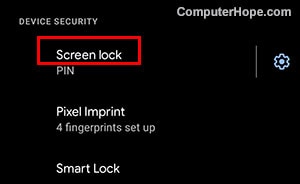
- Select a Screen lock option, i.e., Swipe, Example, PIN, Password, etc.
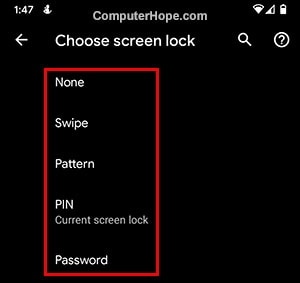
- When you pick your choice, follow the guidelines on the screen to set it. Enter your screen lock straightaway.
- Then redo your screen lock on the following screen, then, at that point, tap Confirm.
Part 2: 4 Simple Ways to Bypass Your Vivo Y100 Phone Password
1. Google Find My Device
Our first approach to unlocking your device is to do a factory reset. That erases every one of the data on your phone too. You can perform this method if you have your Google account credentials and are ready. However, we want you to back up your data so you can sign once more after the reset and restore a ton of your data.
Since you’re locked out, you will have to utilize a technique to do the reset. The most straightforward way is to utilize Google’s Find My Device site. So, if the Find my Device option feature is enabled on your phone, you can tap the Erase device choice on this page to reset it.

2. Enter Recovery Mode to Hard Reset
If you can’t use the Find my device feature, you’ll have to factory reset physically. To do as such:
- Power your device off.
- Hold the Volume (-) and power keys all the while after the screen goes dark to raise Android’s bootloader menu. This button blend might be different relying on your device model.
- Press the Volume down button two times to feature the Recovery Mode choice. Then, at that point, press the power button to choose it.
- Hold the power button and press the Volume up button to enter this mode.
- Utilize the volume buttons to go to the Wipe data/Factory Reset choice. Continue with the steps to play out a factory reset.
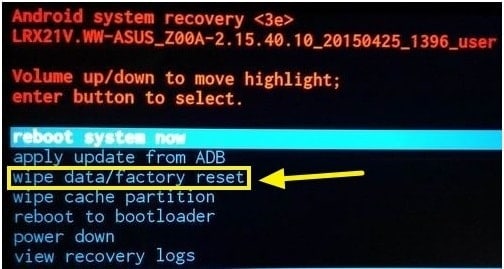
3. Use ADB
This fix isn’t guaranteed to work; if you don’t watch out, it could damage your phone. Therefore, we suggest you back up everything on your Android before proceeding.
If your phone has USB debugging enabled, is connected to a PC, and is not encrypted, follow these steps:
- Connect your device to your PC through a USB connector.
- Open Command Prompt or Terminal window to your ADB installation registry.
- Type in adb shell rm/data/system/gesture.key and click the Enter key.
- Reboot your phone. When you do, the solid lock screen ought to be gone.
- That is not a permanent condition, so reset your PIN or password lock before you reboot your device once more. That’s how you reset password for phone.
4.Dr.Fone-Screen Unlock
If you want to unlock your phone without losing any data, we suggest Dr.Fone-Screen Unlock. Dr.Fone is a professional unlocking tool that can remove all types of screen locks in minutes. Dr.Fone is an all-in-one solution for all your iOS and Android needs. So, if you need a quick solution for your phone, download it now.
Step 1. Connect your Android telephone
Open the tool on your PC and select the “Screen Unlock” tool.

When the entire process is finished, you can access your Android device without entering any PIN and view all your data on the Vivo Y100 device.
Step 2. Select Unlock Android Screen tool
We provide 2 options for you, and to unlock screen, you should select “Unlock Android Screen”.

Step 3. Select device model
There are still 2 buttons to choose, “100% Remove Screen Lock” is for most Android brands, but please back your device up before you pick it.

Check the brands list and make sure your unlock process keeps.

Step 4. Enter into Recovery Mode
Then follow the instructions on the program to get the Android phone into Recovery Mode. Here we take 3 different models of Samsung phones as example. (Note: Processes are different according to different brands).
Recovery Mode in Samsung Phone with Bixby

Recovery Mode in Samsung Phone without Bixby

Recovery Mode in Samsung Phone with Home Button

Step 5. Instructions to Erase Cache Partition
Steps in Recovery Mode are really important, find the correct options and your locked screen will be removed.

Now it’s a phone everyone can access without password or pattern.

Part 3: How to Back up My Vivo Y100 Easily?
### Dr.Fone-Phone BackupAs we all know, unlocking a lock screen password involves a hard reset, which can delete your user data. Therefore, you must back up your files before hard resetting.
There are several tools available to back up your files. You can use Google or your phone manufacturer’s cloud services to back up your file. However, none of them are secure enough. So, we suggest Dr.Fone-Phone Backup have a secure and reliable backup experience. Dr.Fone lets you choose the files you need and back them up. Moreover, you can restore those files to your phone once it gets unlocked.
The Bottom Line
Getting locked out of your phone can be frustrating, especially if you need an important file from it. However, there are solutions to get over this issue and unlock the password for phone. This article contains all you need to unlock your device and return it to be normal. Moreover, if you don’t want to lose your data, give Dr.Fone a try. It is currently the best unlocking and backup tool in the market.
- Title: Rootjunky APK To Bypass Google FRP Lock For Vivo Y100
- Author: Peter
- Created at : 2024-07-16 10:52:55
- Updated at : 2024-07-17 10:52:55
- Link: https://android-unlock.techidaily.com/rootjunky-apk-to-bypass-google-frp-lock-for-vivo-y100-by-drfone-android/
- License: This work is licensed under CC BY-NC-SA 4.0.



